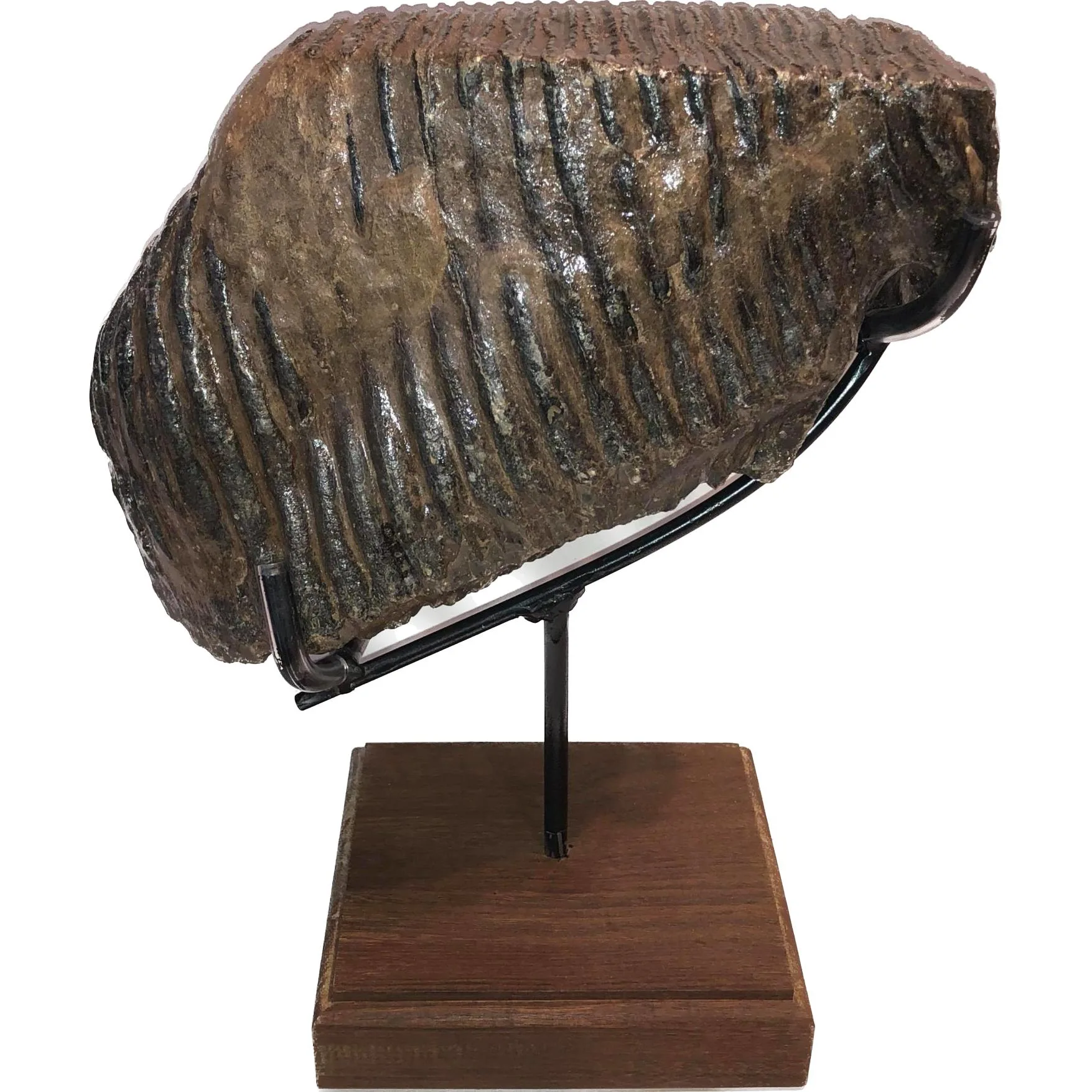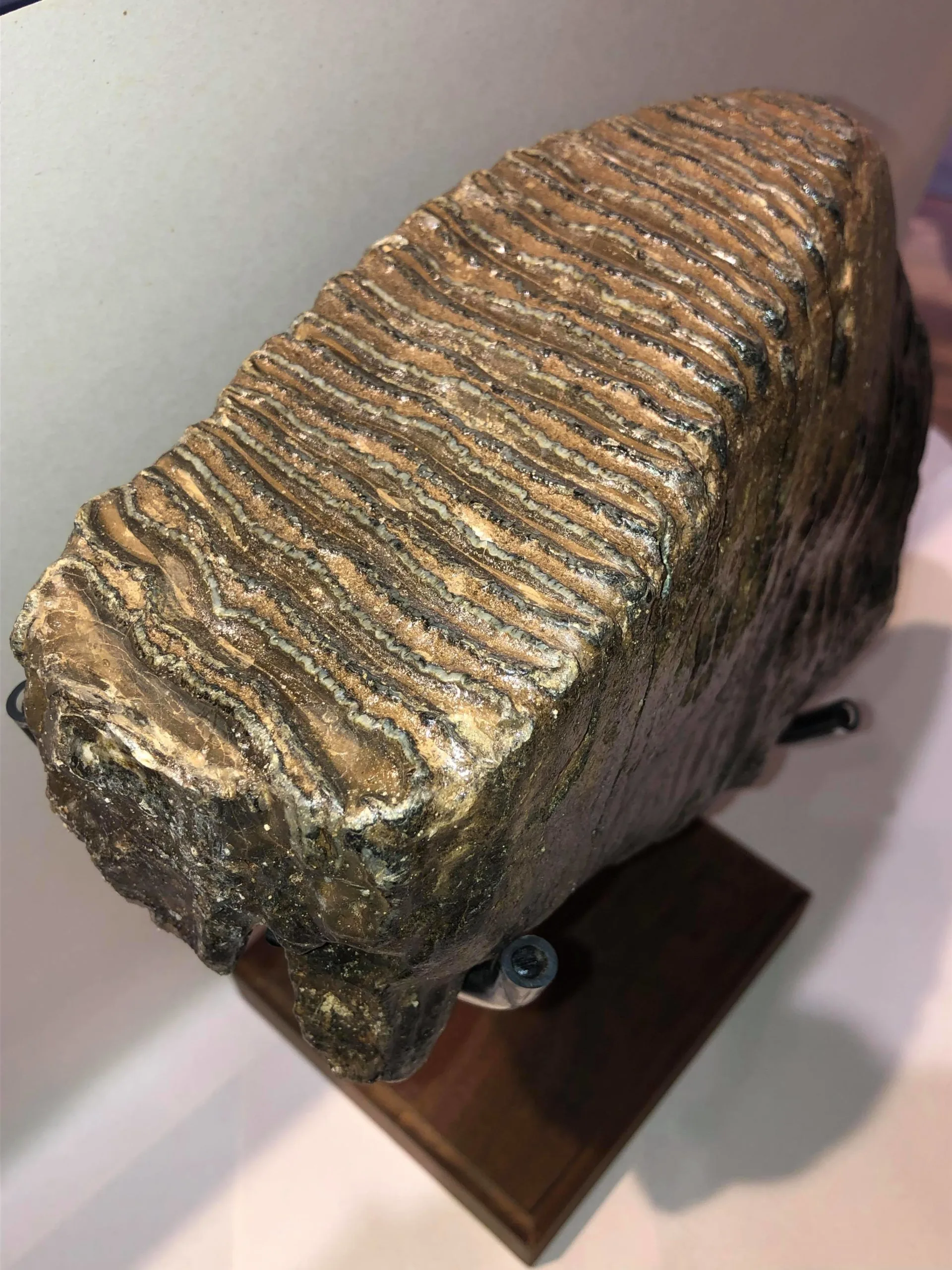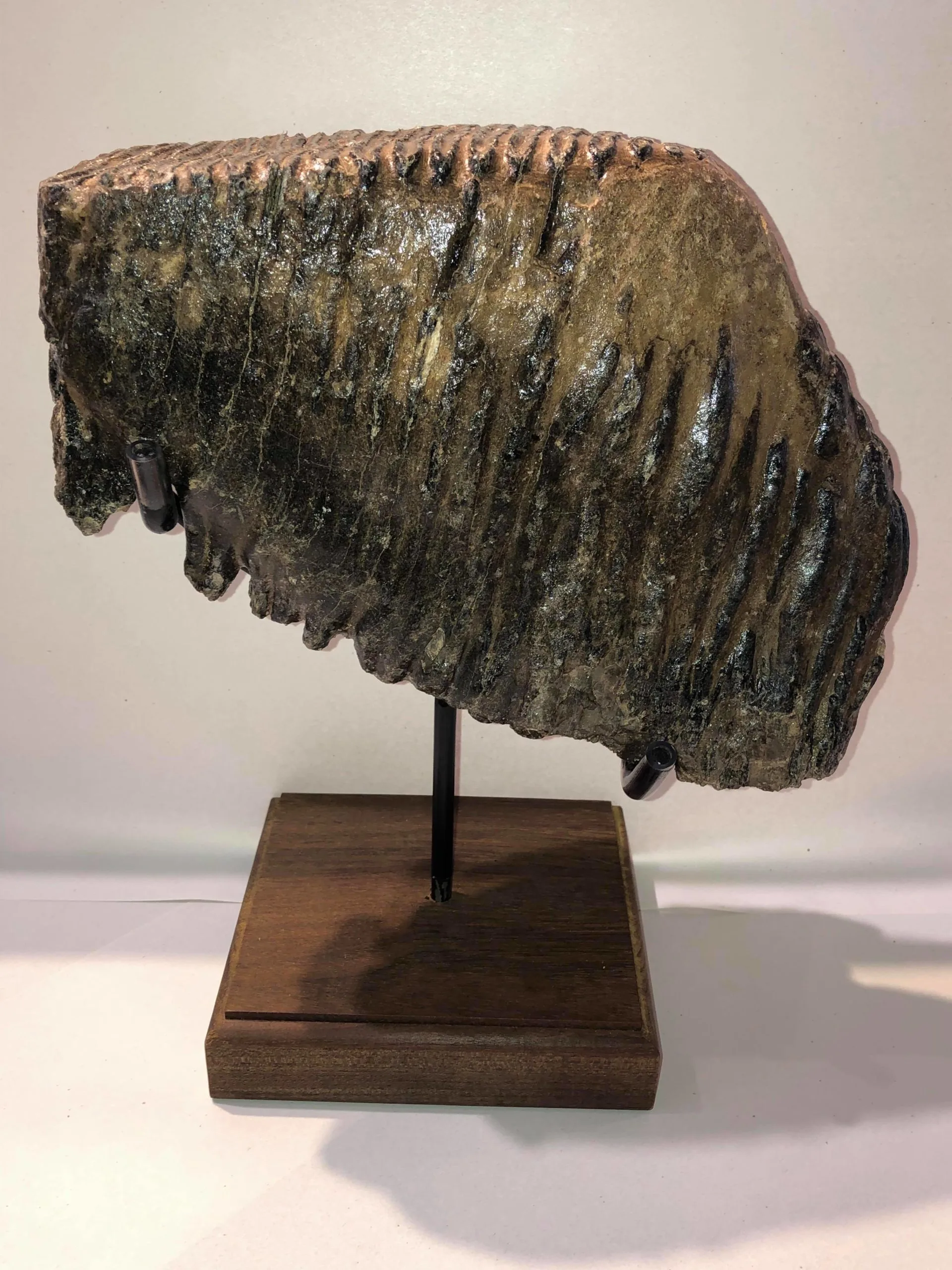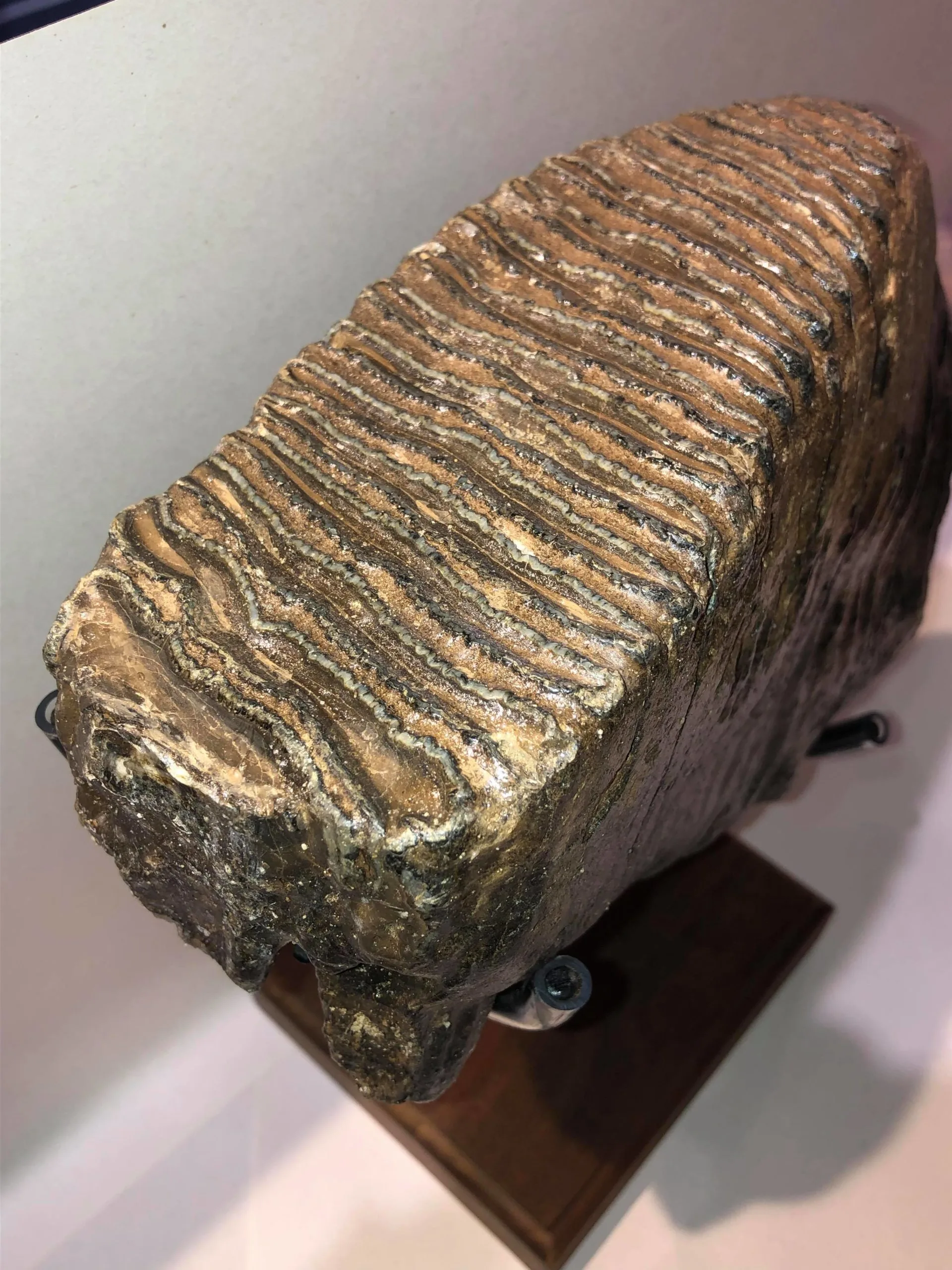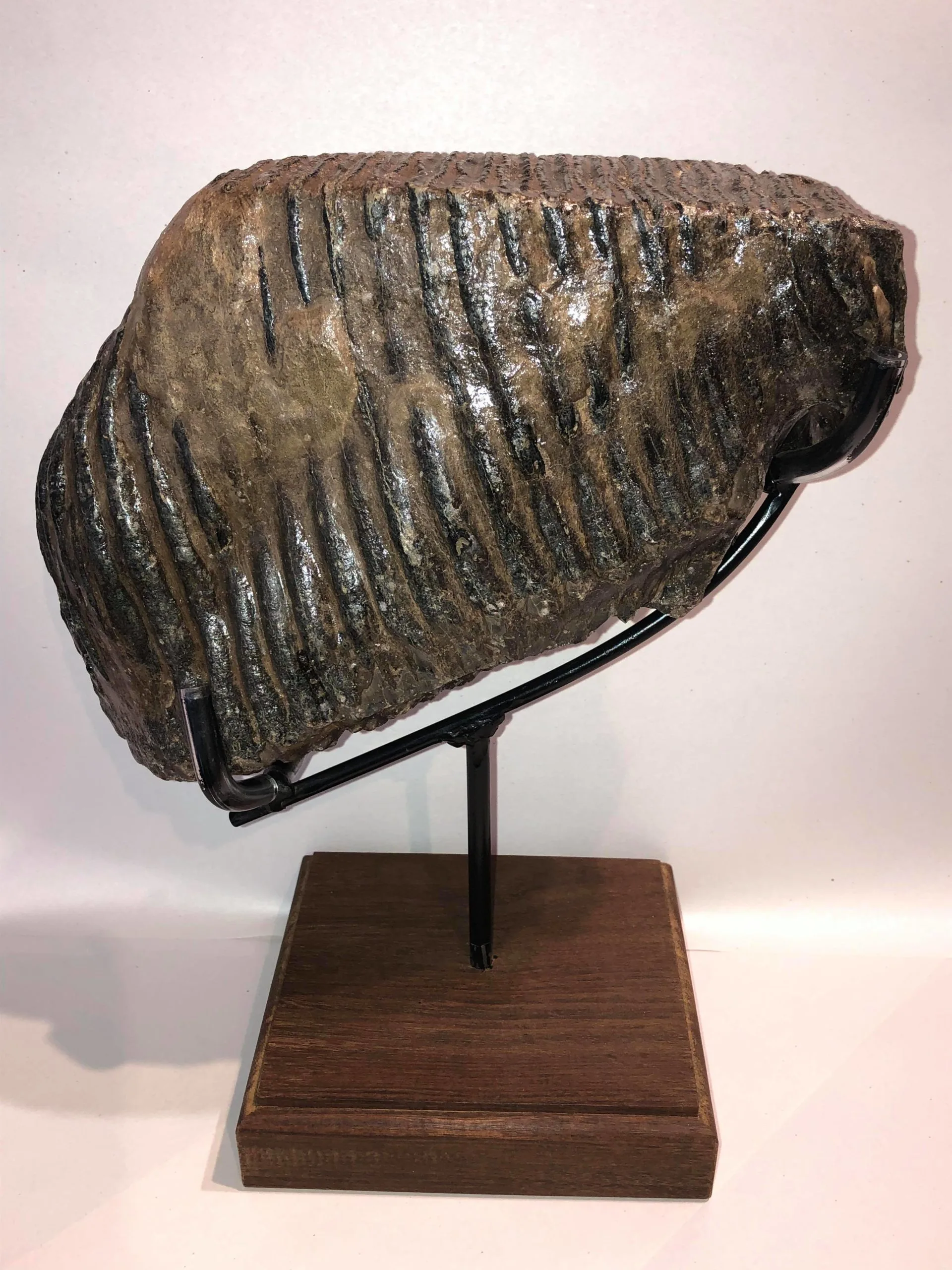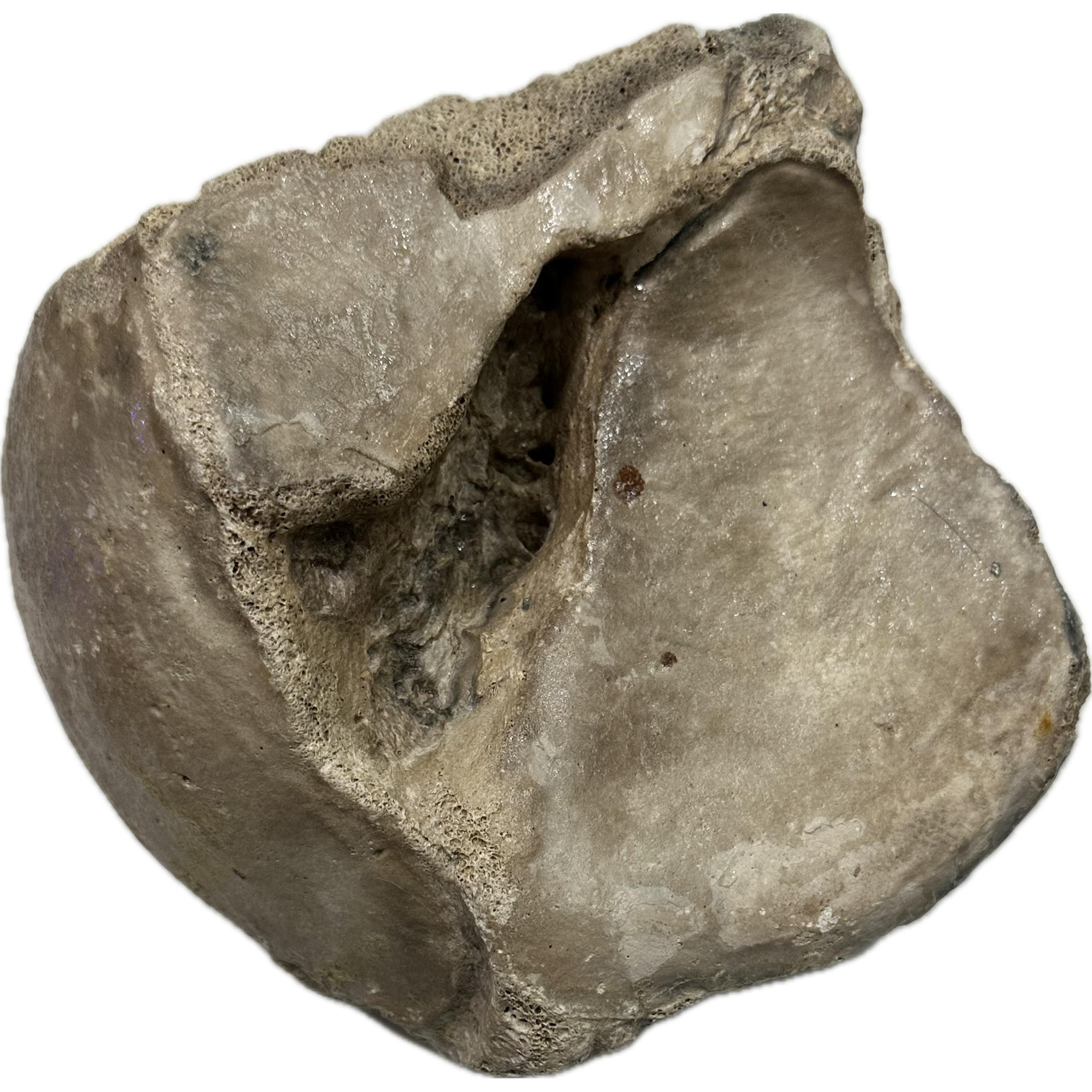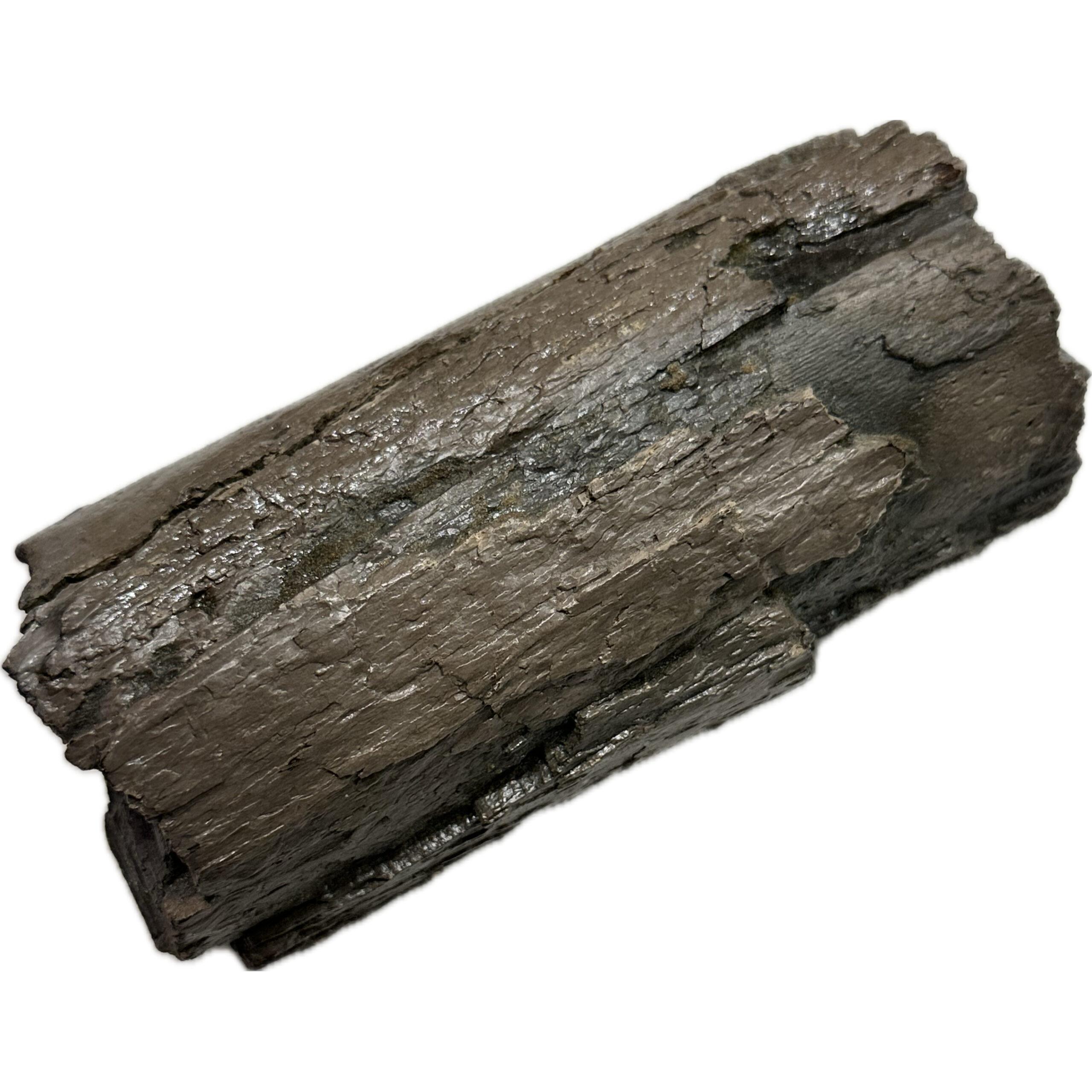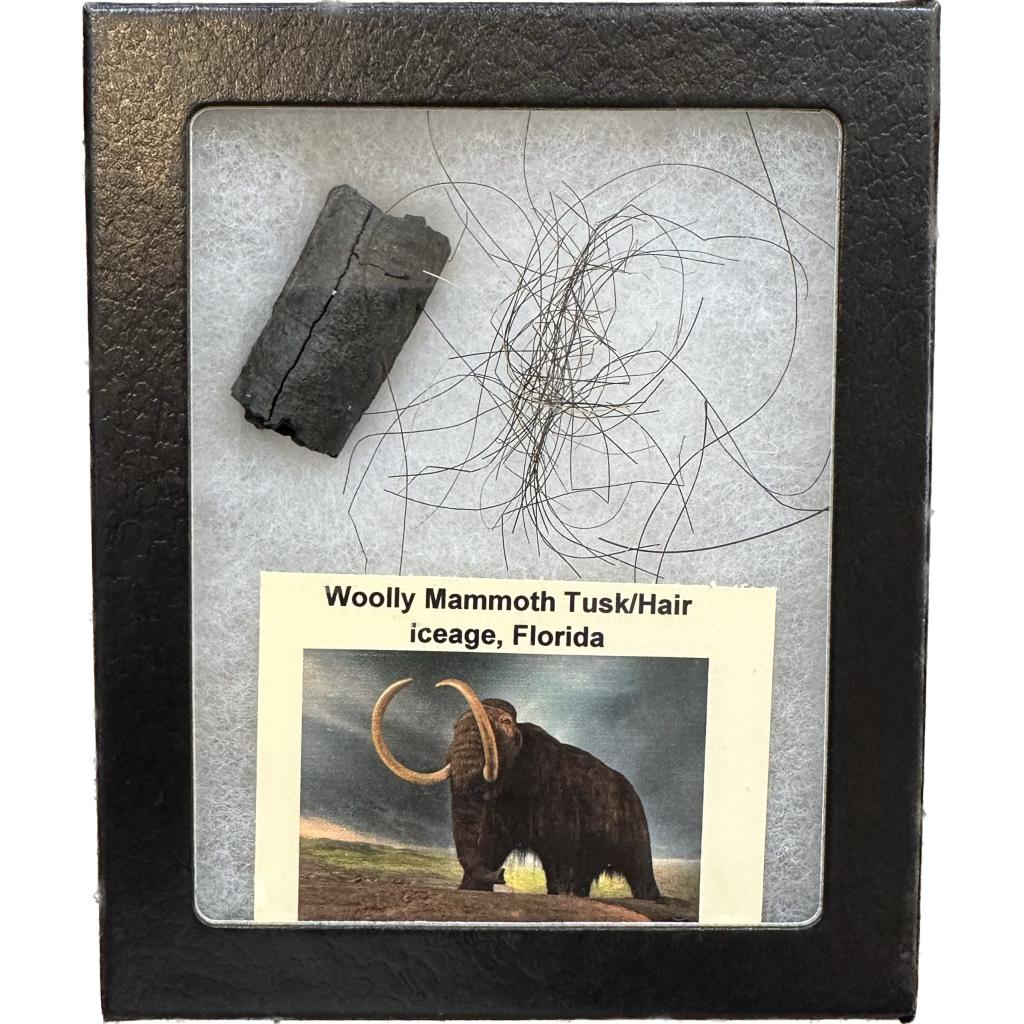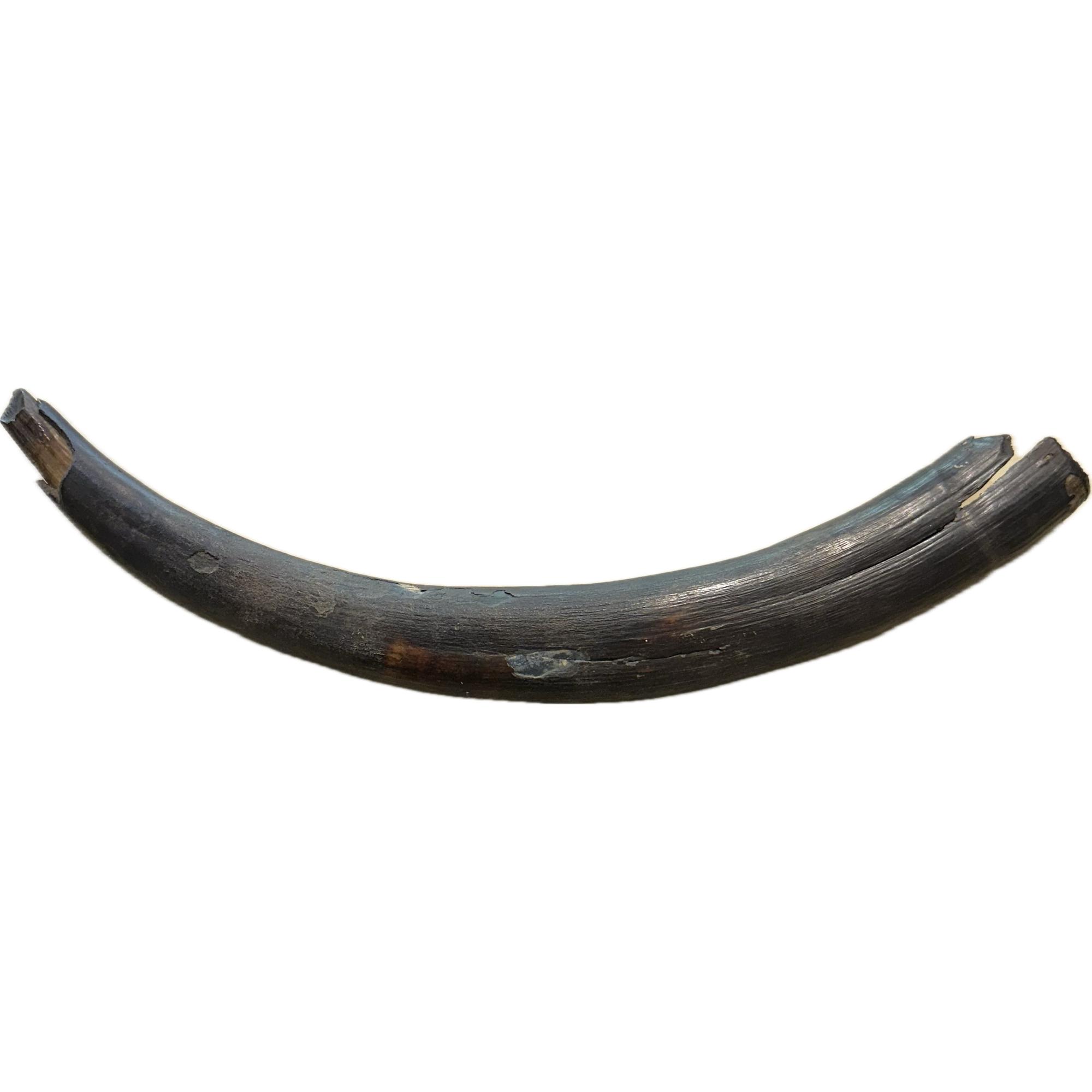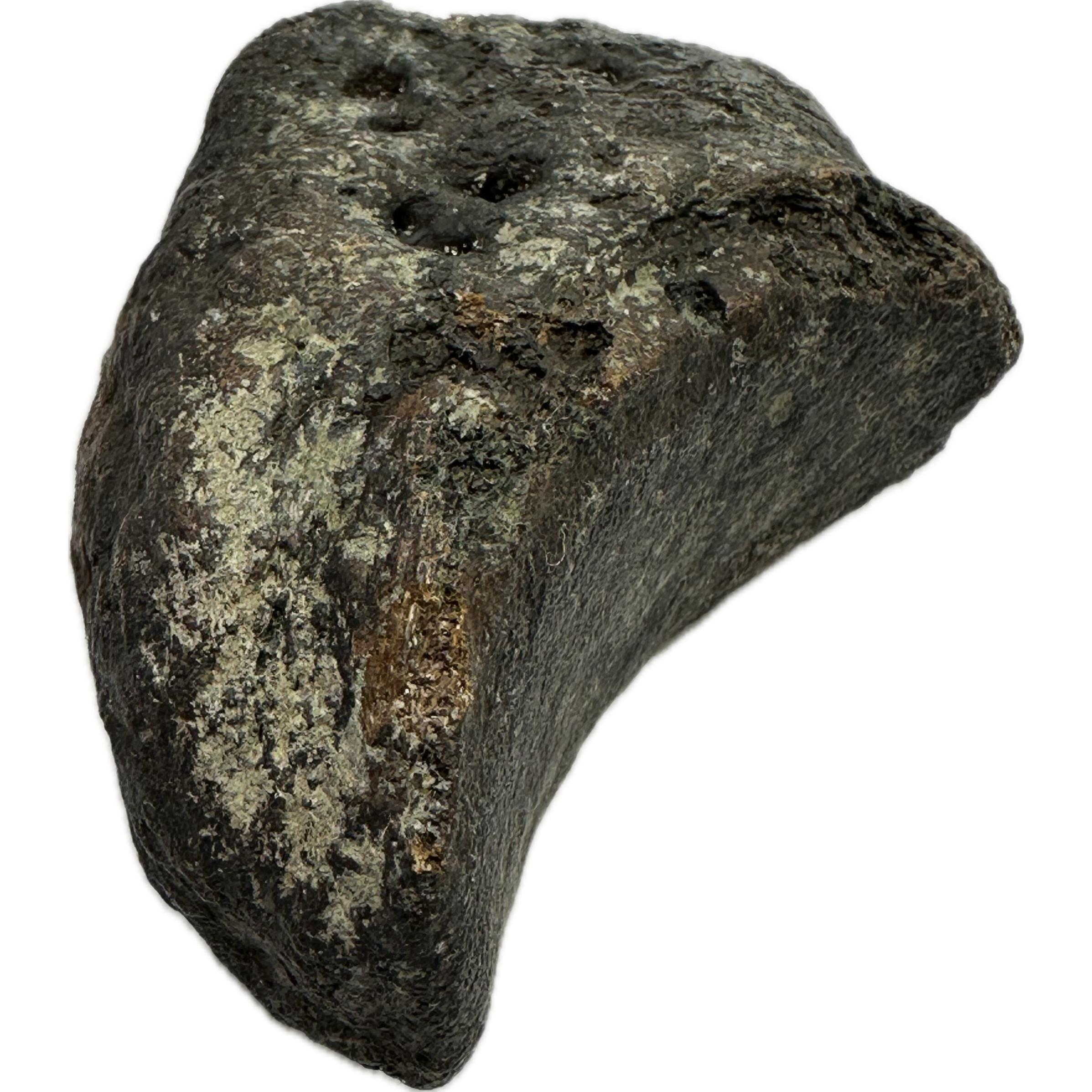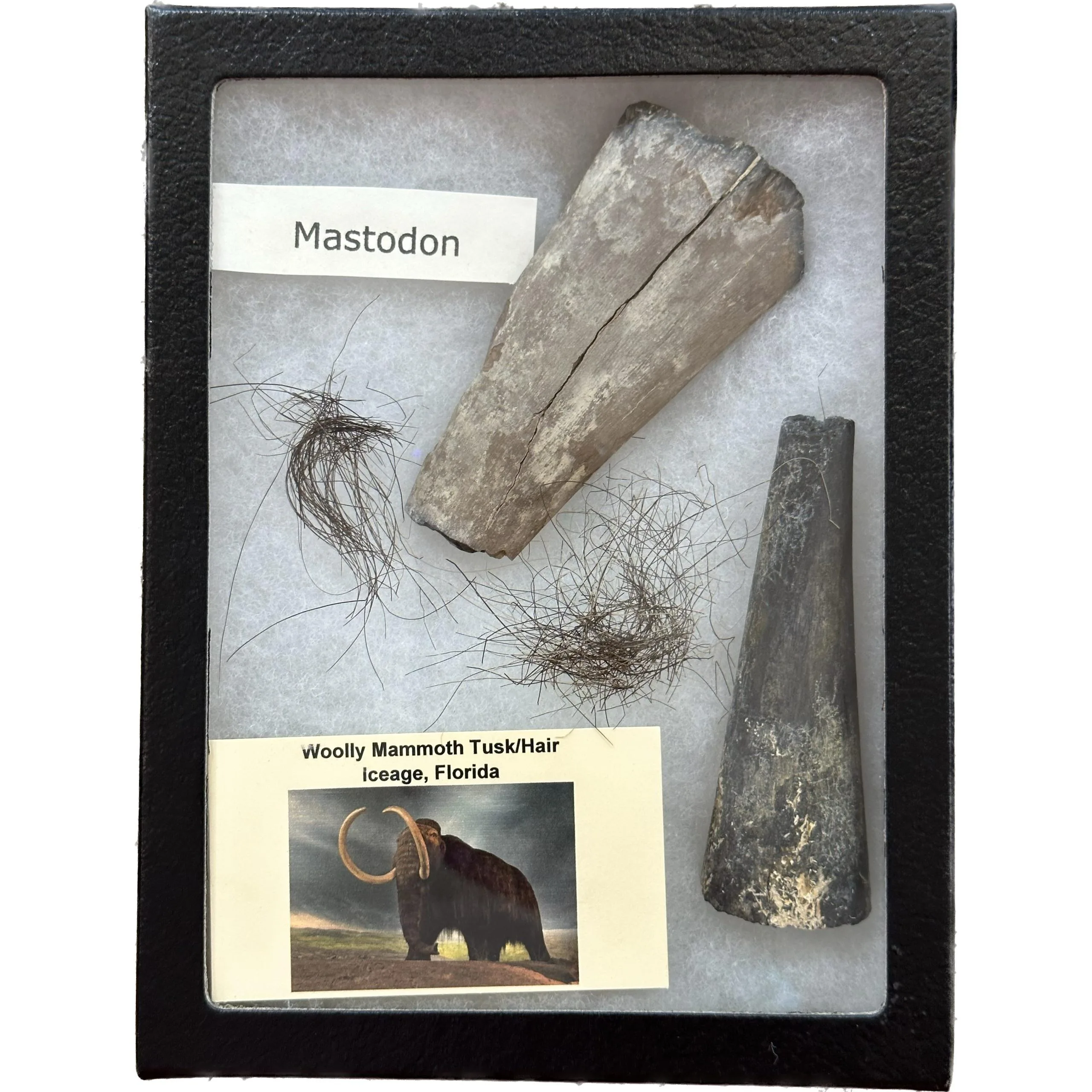Woolly Mammoth Tooth, custom stand
This exceptional Mammoth tooth is expertly prepared and mounted. The Woolly Mammoth molar has variety of colors ranging from dark brown, rust colored, to slight black striations. This gorgeous fossil was excavated in the Netherlands. The molar measures almost a foot long.
Woolly Mammoths and Mastodons are two of the most iconic and well-known members of the proboscidean family, each with its own unique adaptations and evolutionary history.
Woolly mammoths (Mammuthus primigenius) are perhaps the most famous of all prehistoric elephants. These magnificent creatures inhabited the northern regions of North America, Europe, and Asia during the Pleistocene epoch, roughly 2.5 million to 10,000 years ago. They were superbly adapted to the cold, harsh environments of the Ice Age, sporting a thick layer of woolly fur that provided insulation against the frigid temperatures. Their long, curved tusks, which could reach impressive lengths, were used for various tasks, including digging for food, defending against predators, and perhaps even foraging through snow and ice.
Woolly mammoths were grazers, feeding on grasses, sedges, and other low-lying vegetation found in the tundra and steppe environments they inhabited. Their grazing activities played a crucial role in shaping the ecosystems of the Pleistocene, influencing the distribution and abundance of plant species across vast landscapes. Despite their adaptation to cold climates, woolly mammoths eventually succumbed to the pressures of climate change, habitat loss, and human hunting, with the last populations disappearing from remote Arctic islands around 4,000 years ago.

Mastodons, on the other hand, were another group of prehistoric elephants that roamed the Earth during the Pleistocene epoch. Unlike woolly mammoths, mastodons (genus Mammut) were more heavily built and had distinctively shaped teeth adapted for browsing on leaves, twigs, and shrubs. They inhabited a wide range of habitats across North and Central America, from forests to grasslands, and were distributed more widely than woolly mammoths.
Mastodons had shorter, straighter tusks compared to mammoths, which were likely used for stripping bark from trees and digging for roots and tubers. Their teeth, characterized by prominent cusps and ridges, were well-suited for grinding tough vegetation. Mastodons were important herbivores in their ecosystems, playing roles as browsers and helping to shape forest dynamics through their feeding habits. Like woolly mammoths, mastodons faced extinction at the end of the Pleistocene epoch, likely due to a combination of climate change, habitat loss, and human hunting.
The study of mammoths and mastodons sheds light on the interconnectedness of life on Earth and the resilience of species in the face of environmental challenges. As we continue to unravel the mysteries of these magnificent creatures, we gain a deeper understanding of our planet’s rich and diverse natural history.
Mammoths were distributed across a wide range of habitats, including Alaska, Siberia, and even Washington State, during the Pleistocene epoch. Each of these regions offers unique insights into the lives of these iconic prehistoric elephants.
In Alaska, woolly mammoths (Mammuthus primigenius) were particularly well-adapted to the cold, harsh environments of the northern tundra. These magnificent creatures roamed the vast expanses of the Alaskan landscape, where they grazed on grasses, sedges, and other vegetation that thrived in the cold, open habitats. Alaska was a crucial part of the mammoth’s range during the Ice Age, providing ample food resources and suitable habitats for these massive herbivores. Fossil remains of woolly mammoths have been discovered throughout Alaska, preserved in permafrost and sediments for thousands of years. These fossils have provided valuable insights into the anatomy, behavior, and ecology of mammoths, as well as the environmental conditions in which they lived.

In Siberia, woolly mammoths were also widespread, inhabiting the vast expanses of the Siberian steppes and tundra. Siberia was a key region for mammoths, offering a rich and diverse array of habitats ranging from grasslands to boreal forests. Mammoths in Siberia faced similar challenges to those in Alaska, including harsh winters, limited food resources, and predation by carnivores such as cave lions and saber-toothed cats. Siberia is renowned for its well-preserved mammoth remains, often found in permafrost deposits or trapped in ice.
Washington State, although not as well-known for its mammoth fossils as Alaska and Siberia, has also yielded significant discoveries of these ancient elephants. During the Pleistocene epoch, mammoths inhabited various parts of North America, including the Pacific Northwest. Fossilized remains of mammoths, including tusks, bones, and teeth, have been found in Washington State, particularly in areas such as the Columbia Basin and the Olympic Peninsula.
Prehistoric 101 (Learn about fossils, minerals, and meteorites)
What is a Woolly Mammoth?
What is a Mastodon?
Prehistoric Elephants

